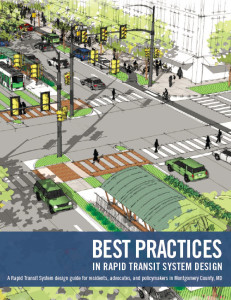Coalition for Smarter Growth, Southern Environmental Law Center, Piedmont Environmental Council, Sierra Club – Virginia Chapter, Arlington Coalition for Sensible Transportation
FOR IMMEDIATE RELEASE
January 29, 2016
CONTACT
Stewart Schwartz, Coalition for Smarter Growth, (703) 599-6437
Trip Pollard, Southern Environmental Law Center, (804) 318-7484
RICHMOND, VA — Today, several smart growth, transportation reform, and conservation groups reemphasized their support for the McAuliffe administration’s proposal to improve traffic flow along I-66 inside the Beltway, in response to a letter a group of state legislators recently sent Virginia’s Secretary of Transportation voicing their opposition to the plan.
“We understand the concerns of legislators and constituents about the tolls, but the Governor’s package of solutions is many times more effective than the widening those legislators are pressing, and it represents both a progressive and a fiscally conservative approach to a major transportation problem,” said Stewart Schwartz, Executive Director of the Coalition for Smarter Growth.
“VDOT’s analysis of the congestion reduction benefits of various projects found that the administration’s proposal to open the HOV lanes to all drivers while charging a toll for single-occupant vehicles, and using the toll revenue to fund transit, strategic widening, and carpooling improvements along I-66 would be six times more effective than widening alone. It would move 40,000 more people through the corridor faster and more reliably,” said Trip Pollard, Director of the Land and Community Program of the Southern Environmental Law Center.
Under the current multi-jurisdictional agreement, widening would be considered after the tolling, carpools and transit are given an opportunity to work and their effectiveness is fully evaluated.
“The problem with widening as the default response to every traffic problem, is that induced demand causes newly widened roads to fill up again in as little as five years,” said Schwartz. “I expect that to happen even more quickly on I-66, as the bottleneck gets pushed to a new location. Besides, where do additional cars go as they try to exit onto local streets in Arlington or Constitution Avenue in DC? We need a demand management solution, and that’s what the Governor’s package provides.” Studies in 2005, 2009, and 2012 built toward the 2015 proposal. All determined that a widening-only approach wouldn’t work very well.
Tolls on I-66 will make it possible for single-occupant drivers to use the lanes, and dynamic congestion-pricing will ensure that carpools, transit, and single-occupant vehicles are guaranteed a minimum speed of 45 mph through the corridor, ensuring trips are faster and more reliable.
“The revenues from the tolls will also provide as much as $10 million per year to provide increased commuter bus service and rail cars needed for 8-car trains on Metro’s orange line, helping even more people to move through the corridor to get to jobs,” said Douglas Stewart, Transportation Chair for the Sierra Club – Virginia Chapter. “It’s important for the legislators to recognize that increased transit service represents capacity expansion that is more efficient, effective and sustainable over the long-term.”
The Coalition for Smarter Growth is the leading organization in the Washington DC region dedicated to making the case for smart growth. Its mission is to promote walkable, inclusive, and transit-oriented communities, and the land use and transportation policies and investments needed to make those communities flourish. Learn more at smartergrowth.net.
The Southern Environmental Law Center is a regional nonprofit using the power of the law to protect the health and environment of the Southeast (Virginia, Tennessee, North and South Carolina, Georgia, and Alabama). Founded in 1986, SELC’s team of over 60 legal experts represent more than 100 partner groups on issues of climate change and energy, air and water quality, forests, the coast and wetlands, transportation, and land use. Learn more at SouthernEnvironment.org.
Since 1972, the Piedmont Environmental Council has proudly promoted and protected the natural resources, rural economy, history and beauty of the Virginia Piedmont. Learn more about the Piedmont Environmental Council at pecva.org.
The Virginia Chapter of the Sierra Club is 15,000 members strong. We are your friends and neighbors working to build healthy, livable communities, and to conserve and restore our natural environment. Learn more at sierraclub.org/virginia.
The Arlington Coalition for Sensible Transportation has campaigned for a ‘wiser, not wider’ I-66 inside the Beltway since 1999. Learn more at acstnet.blogspot.com.
###

